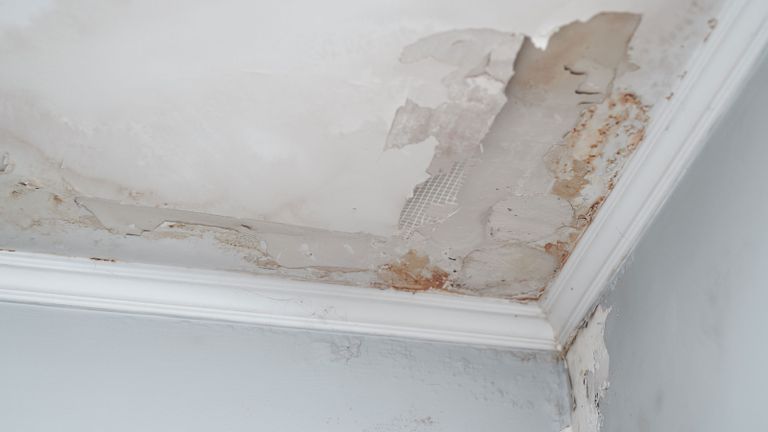Almost everyone is bound to have their own theory about Fire And Water Damage Prevention.

Water offers life, but water intrusion on some components where it's not expected to be can result in damages as well as inconvenience. In enhancement, homes with water damages odor old as well as stuffy.
Water can originate from lots of sources like tropical storms, floodings, ruptured pipes, leakages, and sewage system problems. It's much better to have a functioning understanding of safety and security precautions if you have water damages. Below are a few standards on exactly how to deal with water damages.
Do Prioritize Residence Insurance Policy Protection
Seasonal water damage can come from floodings, seasonal rainfalls, and wind. There is also an event of an unexpected flood, whether it originated from a defective pipe that suddenly breaks right into your home. To protect your house, get house insurance that covers both disasters such as all-natural disasters, as well as emergency situations like broken plumbing.
Don't Neglect to Switch Off Utilities
When disaster strikes and you're in a flood-prone area, shut off the primary electric circuit. Switching off the power protects against
When water comes in as water serves as a conductor, electrical shocks. Don't forget to switch off the major water line shutoff as a method to avoid more damages.
Keep your furnishings steady as they can move about as well as cause added damage if the floodwaters are getting high.
Do Keep Proactive and Heed Weather Alerts
If you live in a location tormented by floodings, remain prepared and proactive at all times. Listen to the information and evacuation cautions if you live near a body of water like a river, creek, or lake .
Do Not Disregard the Roof
Prior to the climate transforms terrible as well as for the worse, do a roofing inspection. A better behavior is to have a yearly roof evaluation to mitigate future troubles as well as complex problems. A good roof without any openings and leakages can be an excellent shield versus a device and the rainfall to avoid rainfall damages. Your roofing professional should deal with the faulty rain gutters or any other indicators of damage or weakening. An assessment will certainly avoid water from streaming down your wall surfaces as well as saturating your ceiling.
Do Pay Attention to Small Leaks
A ruptured pipeline does not take place in a vacuum cleaner or over night. There are red flags that can draw your attention and also show to you some damaged pipelines in your house. Indications of red flags in your pipelines consist of bubbling paint, peeling wallpaper, water touches, water spots, or dripping audios behind the wall surfaces. There are signs that the pipeline will break. Don't wait for an escalation if you see these indicators. Repair service and also examine your plumbing fixed prior to it results in huge damage to your home, funds, as well as a personal headache.
Don't Panic in Case of a Burst Pipe
Timing is essential when it comes to water damages. If a pipeline bursts in your home, immediately closed off your main water valve to cut off the resource as well as protect against more damage. Call a reliable water damage reconstruction specialist for support.
Water provides life, however water breach on some components where it's not intended to be can result in damage and hassle. In addition, houses with water damage smell moldy as well as old.
Seasonal water damages can come from floodings, seasonal rainfalls, as well as wind. Indications of red flags in your pipes include gurgling paint, peeling off wallpaper, water streaks, water stains, or dripping audios behind the wall surfaces. If a pipe ruptureds in your home, immediately closed off your primary water valve to reduce off the resource and prevent even more damage.
Some Do's & Don't When Dealing with a Water Damage
DO:
Make sure the water source has been eliminated. Contact a plumber if needed. Turn off circuit breakers supplying electricity to wet areas and unplug any electronics that are on wet carpet or surfaces Remove small furniture items Remove as much excess water as possible by mopping or blotting; Use WHITE towels to blot wet carpeting Wipe water from wooden furniture after removing anything on it Remove and prop up wet upholstery cushions for even drying (check for any bleeding) Pin up curtains or furniture skirts if needed Place aluminum foil, saucers or wood blocks between furniture legs and wet carpet Turn on air conditioning for maximum drying in winter and open windows in the summer Open any drawers and cabinets affected for complete drying but do not force them open Remove any valuable art objects or paintings to a safe, dry place Open any suitcases or luggage that may have been affected to dry, preferably in sunlight Hang any fur or leather goods to dry at room temperature Punch small holes in sagging ceilings to relieve trapped water (don't forget to place pans beneath!); however, if the ceiling is sagging extremely low, stay out of the room and we'll take care of it DO NOT:
Leave wet fabrics in place; dry them as soon as possible Leave books, magazines or any other colored items on wet carpets or floor Use your household vacuum to remove water Use TV's or other electronics/appliances while standing on wet carpets or floors; especially not on wet concrete floors Turn on ceiling fixtures if the ceiling is wet Turn your heat up, unless instructed otherwise

I'm just very eager about What You Can Do At Home To Prevent Fire And Water Damage and I really hope you enjoyed the new blog posting. Do you know another person who is excited by the subject? Take a moment to promote it. Kudos for your time. Visit again soon.